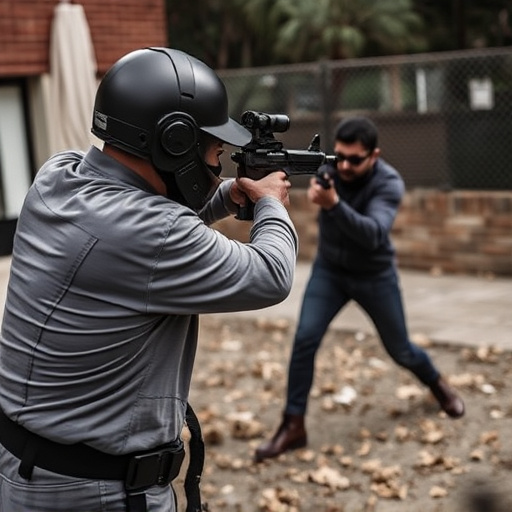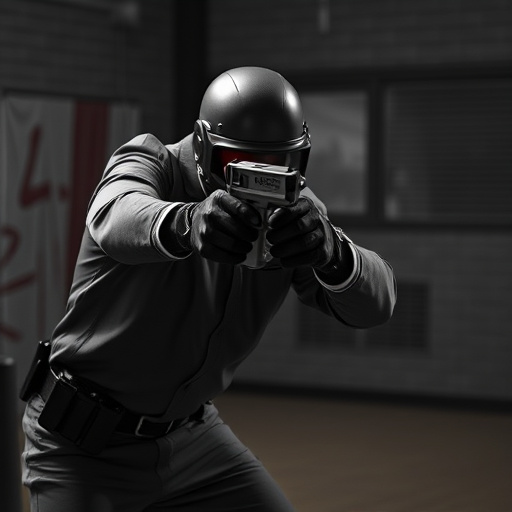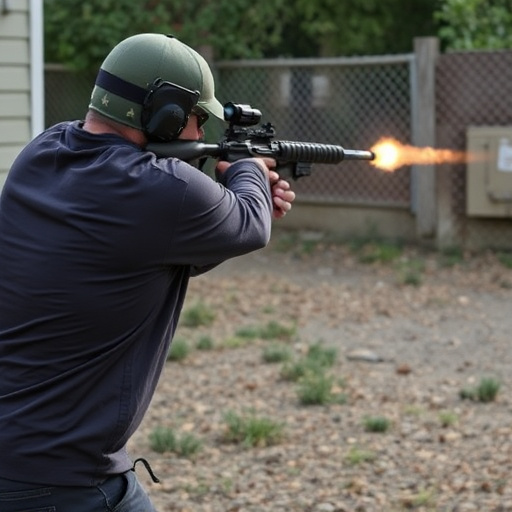Compact stun guns offer a powerful yet discreet self-defense solution, temporarily incapacitating targets with electric current. Balancing power, size, and safety, these devices feature lightweight batteries, efficient electrical circuits, and strategic material selection for optimal performance. While immediate effects are well-documented, ongoing research explores potential long-term neurological stun effects, raising concerns about user safety. Global legality varies, with regulations focusing on public safety and individual rights, often restricting use in sensitive areas due to these effects. Prioritizing safety, users should follow guidelines including proper pointing, protective gear, inspections, charging, and training to minimize unintended consequences, particularly long-term neurological impacts.
“Discover the power of compact stun guns—a revolutionary personal safety tool. This comprehensive guide explores the intricate world of reduced-size stun devices, delving into their design, functionality, and hidden complexities. From understanding the key components that enable their compactness to examining the evolving research on long-term neurological impacts, this article offers valuable insights.
We’ll navigate legal considerations, ensuring users are informed about regulations, and provide essential safety measures for responsible ownership.”
- Understanding Compact Stun Guns: A Brief Overview
- Key Components and Design Considerations for Size Reduction
- Long-Term Neurological Impact: Current Research Findings
- Legal Aspects and Regulations Regarding Compact Stun Guns
- Safety Measures and Best Practices for Users
Understanding Compact Stun Guns: A Brief Overview

Compact stun guns, also known as personal defense devices, are designed to fit easily in one’s hand or pocket, offering a convenient and discreet way to deter potential threats. These handheld electroshock weapons utilize an electric current to disrupt muscle control in the target, causing temporary incapacitation. While their compact size is a primary selling point, it doesn’t compromise effectiveness. Modern stun guns can deliver powerful jolts capable of long-term neurological stun effects, ensuring users have a reliable self-defense mechanism at their fingertips.
The appeal lies not only in their size but also in the peace of mind they provide. Users can carry these devices legally (subject to local regulations) and use them as a last resort when facing dangerous situations. The long-term neurological stun effects associated with stun guns are an essential consideration, as they ensure that potential aggressors receive a severe enough shock to disable them without causing permanent damage. This balance between effectiveness and safety is what makes compact stun guns a serious option for personal protection.
Key Components and Design Considerations for Size Reduction

The design and size reduction of compact stun guns involve careful consideration of several key components to ensure effectiveness while minimizing dimensions. One of the primary foci is the power source, where lightweight yet high-capacity batteries are essential to achieving a powerful shock without adding significant weight. The electrical circuit must be optimized for both efficiency and compactness, ensuring the device can deliver the necessary current to achieve stun effects without compromising longevity or safety.
Furthermore, the design must balance the placement of internal components to reduce overall size. Strategic use of materials with specific properties is crucial—for instance, lightweight yet robust metals and advanced polymers to create a sturdy yet slim housing. Additionally, considerations regarding heat dissipation are vital, as compactness can intensify the buildup of heat during operation, necessitating efficient cooling mechanisms to prevent overheating and maintain optimal performance over the long term, including mitigating potential long-term neurological stun effects.
Long-Term Neurological Impact: Current Research Findings

The long-term neurological impact of stun guns, or electroshock weapons, is a growing area of interest in current research. While immediate effects are well-documented, with studies showing temporary muscle paralysis and disruption of motor functions, there is emerging evidence suggesting potential lasting consequences for users’ nervous systems. Recent studies have explored the possibility of long-term neurological stun effects, including persistent sensory disturbances, cognitive impairments, and even changes in brain structure.
These findings are particularly relevant as stun gun usage continues to increase globally, often employing individuals who may be at higher risk for such adverse effects, such as law enforcement officers or those in high-stress professions. As research progresses, understanding the long-term neurological stun effects becomes crucial for developing appropriate safety guidelines and mitigating potential risks associated with these devices.
Legal Aspects and Regulations Regarding Compact Stun Guns

The legality and regulations surrounding compact stun guns vary significantly across different jurisdictions, reflecting a complex interplay between public safety and individual rights. In many countries, these devices are legal for personal protection, provided users meet certain requirements, such as age restrictions and training. However, regulations often dictate power levels, trigger mechanisms, and permitted use cases, ensuring they don’t pose excessive risk to bystanders or law enforcement.
One critical aspect to consider is the potential for long-term neurological stun effects. While stun guns are designed to incapacitate temporarily, repeated or prolonged exposure to their electric shock can lead to unforeseen consequences, including temporary paralysis, muscle strain, and in some cases, lasting neurological damage. As such, regulations often prohibit use in sensitive areas like schools, public gatherings, and workplaces, and mandate safe storage and disposal methods.
Safety Measures and Best Practices for Users

When using a compact stun gun, it’s crucial to prioritize safety and adhere to best practices for responsible use. Always point the device away from yourself and any bystanders to avoid accidental discharge, which could result in temporary or long-term neurological stun effects. Wear protective gear, such as gloves, to minimize the risk of electrical shocks during usage.
Regularly inspect your stun gun for any signs of damage or malfunction before each use. Ensure it’s charged and ready to deploy when needed. Training is essential; familiarize yourself with local laws regarding stun guns and learn proper techniques to maximize effectiveness while minimizing unintended consequences, including potential long-term neurological stun effects.
Compact stun guns, while offering enhanced portability, require careful consideration of both design and safety. The current research on long-term neurological impacts is still evolving, highlighting the need for ongoing studies to fully understand potential effects. Legal regulations vary globally, so users must stay informed about local laws. By adhering to best practices and safety measures, individuals can leverage compact stun guns as effective personal defense tools while prioritizing their well-being and respecting legal boundaries.
